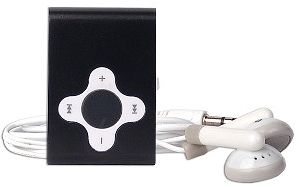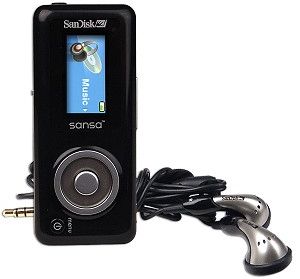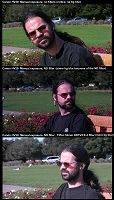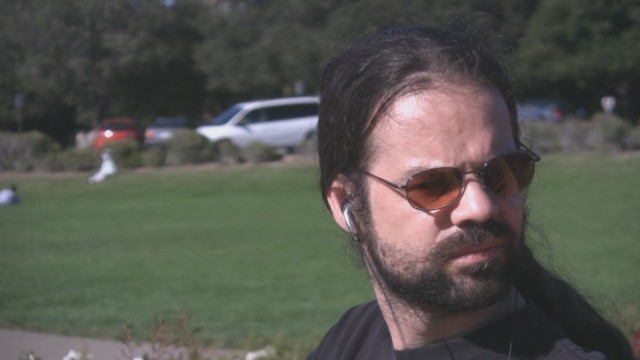Geeks.com sent us over two great-looking and cheap mp3 players for a review, with 1 GB of storage each. One is coming from Sandisk and the other is an... iPod Shuffle clone! Read on for more.
* 1GB USB Mini Digital MP3 Player
All I can say is "wow". This is of course a clone of Apple's iPod shuffle, there is no denying there. But it comes at a price that makes it very relevant, very competitive against the real thing. The iPod Shuffle costs $79, while the FHM-008 costs merely $22. Both devices come with 1 GB storage, very similar sizes and weight, and a similar user interface. The FHM-008 uses a mini-USB as its main PC interface, it has an on/off switch, a 3.5mm earphone jack, and it a very solid clip mechanism that allows the player to get attached to your clothes. The four main interace buttons allow for play/pause, previous/forward song, and volume up/down. There is no fast forward/backward ability. In the box we found a pair of earbuds and a mini-USB cable. Battery life seems to be maxing out at about 6 hours, which is slightly less than Apple's version. Sound quality was top notch and we must note that the player is able to drive headphones very loud. We can not find any problems with this astoninishing product, but just one: the player crashes every now and then. It seems to happen randomly, it doesn't seem to be an mp3 encoder incompatibility. It's a bit discouraging for consumers to see amazing hardware technology that fits in such small cases, and yet the software to be lagging behind in stability. Overall though, this is a cool gadget, and very accesible too. Makes for a great gift.
Rating: 8/10

* SanDisk Sansa C140 1GB MP3/WMA Player w/Voice Record
Here is a super-low priced product that works as it's supposed to with no problems whatsoever! The SanDisk Sansa C140 mp3 player sports 1 GB of storage, can playback both WMA (DRM'ed or not) and MP3 files, it has voice recording capabilities and and FM radio. For the price, it's amazing to see that the product sports a 65k color CSTN screen that is able to fit about 3 lines of text. The device is powered by an AAA battery which lasts between 13 and 16 hours, depending on the battery brand used. While the screen does not fit a lot of text, the user interface has been reworked a lot since the older Sandisk models and so this time we found its usability very good. In fact, with their older Sandisk mp3 players, you would need about 20 minutes to fully understand how everything worked, but on the C140, you will "get it" within 2 minutes. The joystick buttons allow for next/previous, fast forward/backwards, volume up/down, while the "power" key doubles as a "go back to menu" key. The FM radio allows for up to 20 presets, while voice recording proved an easy affair too. In the box we found the SanDisk Sansa c140, some pretty good stereo earbuds, a USB cable that fits into Sandisk's (unfortunately) proprietary slot, a lanyard, and one AAA battery. In the settings we were able to change equalizer settings, language support, while there were also some power settings available too. Apparently, versions 1.x were having lots of problems and there was an outcry about the lack of firmware upgrades for this particular model. Thankfully, the batch that Geeks.com sells comes with a very recent firmware, v2.0.0.7A and so most problems are not present anymore! If you are still stuck with an 1.x firmware, you might want to upgrade (at your own risk). Overall, this is a great product at a great price.
Rating: 9/10








